D. Sengupta, V. Liepa
Table of contents :
APPLIED ELECTROMAGNETICS AND ELECTROMAGNETIC COMPATIBILITY……Page 2
CONTENTS……Page 10
Preface……Page 20
Acknowledgments……Page 24
1.1 Introduction……Page 26
1.2 Definitions……Page 27
1.3 Interference mechanisms……Page 28
1.4 Examples……Page 31
References……Page 32
2.1 Introduction……Page 34
2.4 CW and Transient Sources……Page 35
2.6 Noise Emission Intensity……Page 37
2.8 Discussion of Noise Sources……Page 41
References……Page 43
3.1 Introduction……Page 46
3.2 Basic Parameters……Page 47
3.3.1 Continuity of Current and Conservation of Charge……Page 48
3.3.2 Faraday’s Law……Page 50
3.3.3 Ampère’s Circuital Law……Page 53
3.3.5 Maxwell’s Equations……Page 55
3.3.6 Historical Comments on Maxwell’s Equations……Page 57
3.3.7 Media Considerations……Page 58
3.3.8 Boundary Conditions……Page 61
3.3.9 Energy Flow and Poynting’s Theorem……Page 70
3.4.2 Phasors……Page 74
3.4.3 Time Harmonic Relations……Page 76
3.4.4 Complex Permittivity……Page 79
3.4.5 Boundary Conditions Again……Page 82
3.4.6 Notes on the Solution……Page 84
3.4.7 The Complex Poynting Theorem……Page 87
3.5.1 Time Dependent Case……Page 91
3.5.2 Time Harmonic Case……Page 93
3.6.1 General Considerations……Page 94
3.6.2 Energy Considerations……Page 98
3.6.3 Group Velocity……Page 100
3.6.4 Summary……Page 101
3.6.5 General Representation of TEM Waves……Page 102
3.6.6 Plane Waves in Lossy Media……Page 107
3.6.7 Skin Effect……Page 111
3.6.8 Polarization of Plane Waves……Page 116
3.7.1 Normal Incidence on a Plane Interface……Page 119
3.7.2 Oblique Incidence……Page 125
References……Page 138
Problems……Page 139
4.1 Introduction……Page 142
4.2 Classification of Signals……Page 143
4.3.1 Definitions……Page 144
4.3.2 A Rectangular Pulse……Page 145
4.4 Power Signals……Page 149
4.4.1 Periodic Signals……Page 150
4.4.2 Trapezoidal Waveform……Page 154
4.5 Examples of Some Signals……Page 157
Problems……Page 159
5.1 Introduction……Page 164
5.2 Basic Discussion……Page 165
5.3 Transverse Electromagnetic (TEM) Transmission Lines……Page 166
5.4 Telegrapher’s Equations: Quasi-Lumped Circuit Model……Page 168
5.5 Wave Equations……Page 170
5.6.1 General Solution……Page 171
5.6.2 Further Discussion of Propagation Constant and Characteristic Impedance……Page 173
5.6.3 Voltage, Current, and Impedance Relations……Page 174
5.7.1 Coaxial Line……Page 188
5.7.2 Parallel Wire Line……Page 190
5.7.3 Parallel Plate Line……Page 193
5.7.4 Circular Wire above a Ground Plane……Page 194
5.7.5 Microstrip Line……Page 195
5.7.6 Stripline……Page 199
5.7.7 Comments……Page 202
5.8.1 Initial and Final (Steady State) Values……Page 206
5.8.2 Transient Values……Page 208
5.9.1 Slotted Line Measurements……Page 214
5.9.2 Network Analyzer Measurement……Page 215
References……Page 216
Problems……Page 217
6.1 Introduction……Page 220
6.2 Potential Functions……Page 221
6.3.1 Complete Fields……Page 225
6.3.2 Near Zone and Far Zone Considerations……Page 229
6.3.3 Near Zone and Far Zone Fields……Page 231
6.3.4 Radiated Power and Radiation Pattern……Page 233
6.4 Radiation from a Small Loop of Current……Page 237
6.4.1 Complete Fields……Page 238
6.4.2 Far Zone Fields……Page 241
6.4.3 Radiated Power……Page 242
6.5.1 Radiation lntensity……Page 243
6.5.2 Directivity and Gain……Page 246
6.6 Far Fields of Arbitrary Current Distributions……Page 249
6.6.1 The Radiation Vector and the Far Fields……Page 250
6.6.2 Vector Effective Length of an Antenna……Page 253
6.6.3 Summary……Page 255
6.7.1 Center-Fed Linear Antenna……Page 256
6.7.2 Far Fields of a Dipole of Length l……Page 258
6.7.3 Radiated Power and Directivity……Page 260
6.7.4 Cosine, Sine, and Modified Cosine Integrals……Page 261
6.7.5 The Half-Wave Dipole……Page 263
6.8.1 Basic Assumptions……Page 266
6.8.2 Point or Small Sources……Page 267
6.8.3 Extended Sources……Page 268
6.8.4 Definitions of Various Regions……Page 269
6.8.5 Specific Values of the Region Boundaries……Page 270
6.9 Equivalent Circuits of Antennas……Page 273
6.9.1 Transmitting Antenna……Page 274
6.9.2 Receiving Antennas……Page 276
6.9.3 Equivalent Area……Page 278
6.10.1 General Considerations……Page 281
6.10.2 A Two-Element Array……Page 284
6.11 Antennas Above Ground……Page 288
6.11.1 Ground and Ground Plane……Page 289
6.11.2 Image Theory……Page 290
6.11.3 Images of Electric Current Elements above Perfect Ground……Page 291
6.11.4 Dipoles above Ground……Page 292
6.11.5 Monopole Antennas……Page 297
6.12.1 Biconical Transmission Line……Page 298
6.12.2 Finite Biconical Antenna……Page 303
References……Page 305
Problems……Page 306
7.1 Introduction……Page 310
7.2 The Series RLC Circuit……Page 311
7.3.1 Circuit Theory Description……Page 314
7.3.2 Field Theory Description……Page 315
7.4 Round Wires……Page 318
7.4.1 Resistance……Page 320
7.4.2 Internal Inductance……Page 321
7.5.1 General Relations……Page 323
7.5.2 Circular Loops……Page 326
7.6.1 Partial Inductance……Page 330
7.6.2 Inductance of a Closed Rectangular Loop……Page 333
7.7.1 Printed Circuit Board (PCB) Lines……Page 335
7.7.2 Microstrip, Strip, and Coplanar Lines……Page 337
7.8.1 Bode Plots……Page 339
7.8.2 Resistors……Page 343
7.8.3 Capacitors……Page 345
7.8.4 Inductors……Page 349
References……Page 356
Problems……Page 357
8.1 Introduction……Page 360
8.3 Emissions from Linear Elements……Page 361
8.4.1 Introduction……Page 363
8.4.2 Two Parallel Currents……Page 364
8.5.1 Introduction……Page 368
8.5.2 Voltage Induced on the Two-Wire Transmission Line……Page 370
References……Page 374
9.1 Introduction……Page 376
9.2 Definitions……Page 377
9.3.1 Introduction……Page 378
9.3.2 SE Expressions for Computation……Page 380
9.4 Shielding Effectiveness: Near Field Illumination……Page 382
9.4.1 Electric and Magnetic Sources……Page 383
9.4.2 SE Expressions: Near Zone Considerations……Page 386
9.5 Discussion……Page 388
References……Page 389
10.1 Introduction……Page 390
10.2 Capacitive (Electric) Coupling [1, 3]……Page 391
10.3 Magnetic (Inductive) Coupling……Page 393
10.3.1 Some Basic Concepts……Page 394
10.3.2 Shielding of the Receptor Conductor……Page 395
References……Page 400
11.1 Introduction……Page 402
11.2 Accumulation of Static Charge on Bodies……Page 403
11.3 Charging and Charge Separation……Page 404
11.4 Human Body as Source of ESD……Page 406
11.5 ESD Waveforms……Page 410
11.6 Human Body Circuit Model……Page 413
References……Page 414
12.1 Introduction……Page 416
12.2.1 Introduction……Page 417
12.2.2 FCC Radiated Emission Limits for Digital Devices……Page 418
12.3.1 CISPR Standards……Page 421
12.3.2 European Norms……Page 422
References……Page 423
13.1 Introduction……Page 424
13.3.1 Introduction……Page 425
13.3.3 Antennas……Page 426
13.4.1 Introduction……Page 429
13.4.3 Transients on Power Supply Lines……Page 430
13.4.4 Conducted Emissions from a DUT……Page 432
13.4.5 Some Results……Page 433
References……Page 434
A.1 Introduction……Page 436
A.3.1 Definitions……Page 437
A.3.2 Addition and Subtraction of Vectors……Page 439
A.3.4 Unit Vectors……Page 441
A.3.5 Vector Displacement and Components of a Vector……Page 442
A.4 Vector Surface Element……Page 448
A.5.1 Dot Product of Two Vectors……Page 449
A.5.2 The Cross Product of Two Vectors……Page 454
A.5.3 Product of Three Vectors……Page 456
A.6 Coordinate Systems……Page 458
A.6.1 Three Basic Coordinate Systems……Page 459
A.6.2 Space Variables and Base Vectors……Page 460
A.7.2 Cylindrical and Spherical Systems……Page 462
A.8 Transformation of Unit Vectors……Page 463
A.9 Vector Calculus……Page 464
A.9.1 Time Derivative of Vector A……Page 465
A.9.3 Gradient of a Scalar Function……Page 466
A.9.4 Flux of a Vector……Page 471
A.9.5 Divergence of a Vector A……Page 472
A.9.6 Curl of a Vector Function……Page 475
A.10 The Laplacian D2 = D . D……Page 481
A.11 Comments on Notation……Page 482
A.12.2 Vector Identities……Page 483
A.12.3 Integral Relations……Page 484
References……Page 487
Problems……Page 488
Appendix B: Frequency Band Designations……Page 492
Appendix C: Constitutive Relations……Page 498
Index……Page 504
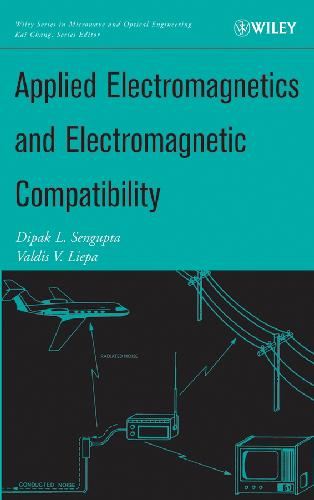
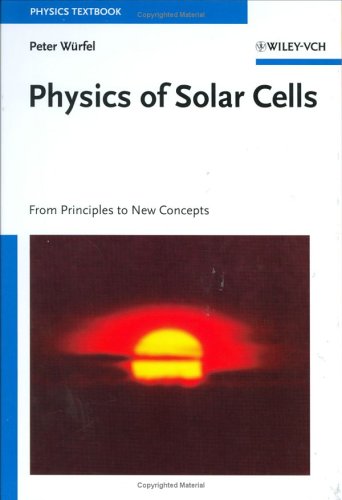
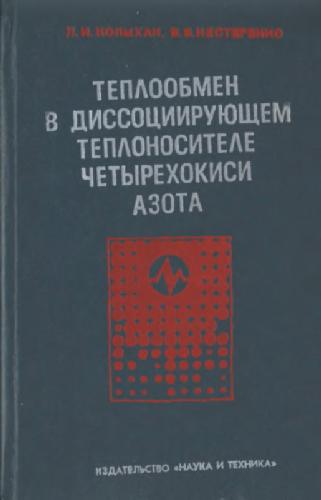
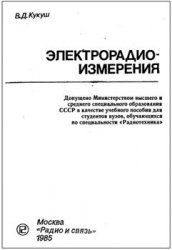


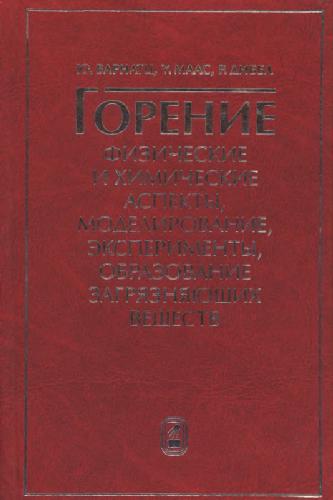
Reviews
There are no reviews yet.